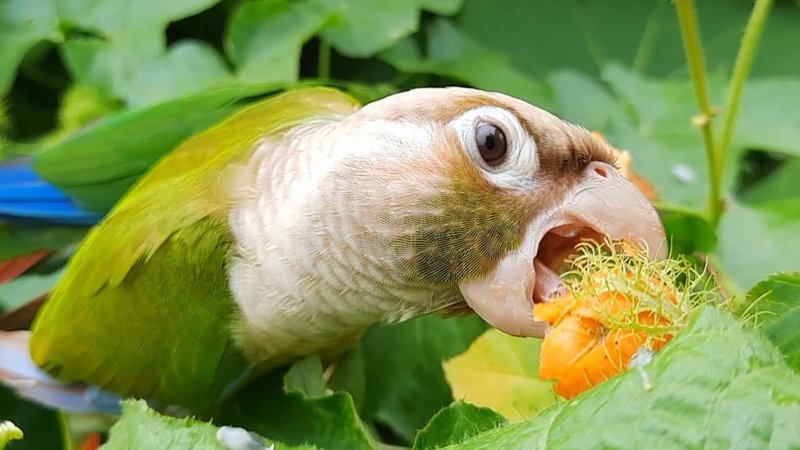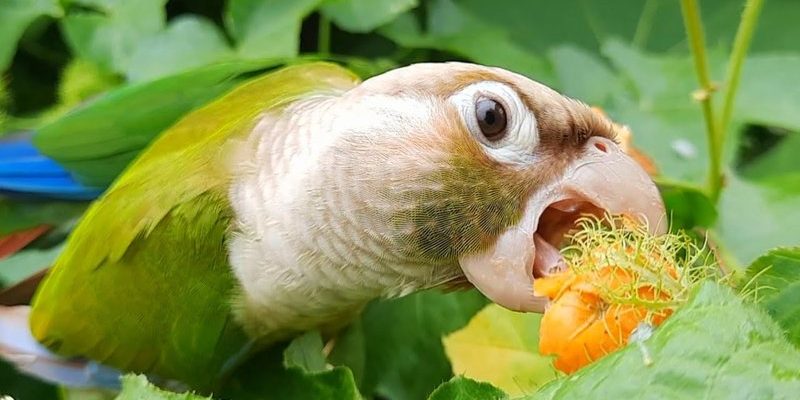
Conures primarily feast on fruits, vegetables, seeds, nuts, and even the occasional flower. But there’s more to their dining habits than just what you toss in their cage. Watching them hunt and forage mimics natural behaviors that are crucial for their well-being. So, let’s dig into what these lively little birds eat and how they go about finding their food in the wild.
Favorite Foods of Conures
Conures have a pretty broad palate, and keeping their diet diverse is key. Generally speaking, you’ll want to provide a mix of foods to meet their nutritional needs. Here’s a quick rundown of their favorites:
- Fruits: Apples, berries, bananas, and citrus fruits are big hits.
- Vegetables: Leafy greens, carrots, and bell peppers offer essential nutrients.
- Seeds and Nuts: While these can be high in fat, they’re loved treats when given in moderation.
- Pellets: Nutritionally balanced pellets can form the basis of their diet.
You might be wondering how to combine these foods effectively. Think of it like preparing a colorful salad — the more variety you have, the more appealing it will be to your conure. Rotating their offerings not only keeps mealtime interesting but also provides essential vitamins and minerals.
Foraging: A Natural Behavior
In the wild, foraging is an essential part of a conure’s daily routine. It’s their way of finding food, staying active, and using their problem-solving skills. Watching a conure forage is like seeing a mini detective at work; they look under leaves, dig through branches, and even hang upside down in search of snacks!
This natural behavior contributes significantly to their mental health. Providing foraging opportunities in captivity can help reduce stress and boredom. You can offer a mix of their favorite treats hidden in foraging toys or scattered around their cage. It’s like creating a treasure hunt—fun and rewarding!
How Conures Hunt in the Wild
Wild conures are naturally curious and adventurous, which helps them find food. They typically hunt in flocks, keeping an eye out for food sources like fruits hanging from trees or seeds scattered on the ground. Their sharp eyesight helps them spot tasty morsels from afar.
When they find fruit, they use their strong beaks to crack it open. Think of their beak as a tool; it’s designed to peel, crack, and tear. That’s why it’s so crucial for them to have access to various textures and hardness in their diet. It keeps their beak healthy and strong!
Another interesting aspect is their ability to mimic sounds and calls. They often communicate with their flock mates to alert them about food sources, much like sharing a secret among friends. This social aspect adds an element of fun to their foraging journey.
How to Mimic Foraging at Home
So, how can you bring a little of that wild spirit into your home? Mimicking foraging behavior can be simple and fun. Here are some ideas:
- Foraging Toys: Invest in toys that challenge your conure to work for their food. Some toys have hidden compartments or require manipulation to access treats.
- Scattered Treats: Scatter their favorite fruits or veggies around the cage or play area. This encourages them to explore and search.
- DIY Foraging: Create your own foraging opportunities by hiding small bits of food inside cardboard tubes or crumpled paper. It’s like a piñata, but for birds!
You’ll not only provide a source of entertainment, but you’ll also help satisfy their natural instincts. Plus, watching them “hunt” for food can be incredibly rewarding!
Common Mistakes in Feeding Conures
Even well-meaning owners can make mistakes when it comes to feeding their conures. Here are a few common pitfalls to avoid:
- Too Many Seeds: While conures love seeds, relying on them too heavily can lead to obesity and health issues. Balance is key.
- Neglecting Fresh Food: Fresh fruits and veggies are essential for their health. Don’t let their diet slide into just pellets or seeds.
- Overlooking Supplements: Consult with a vet about possible vitamin or mineral supplements to ensure your conure gets everything they need.
By avoiding these mistakes, you’ll be on your way to raising a happy, healthy conure. It’s a bit like being a chef; you want to find the right balance that keeps things flavorful and nutritious.
Understanding what conures eat and how they hunt and forage helps you create an engaging environment for your feathered friend. Their nutritious diet is essential, but so is providing them with opportunities to explore, search, and play. Think of it this way: a happy conure is one that feels stimulated both physically and mentally.
By incorporating variety into their meals and mimicking their natural foraging behaviors, you’re setting the stage for a healthy, active lifestyle. Plus, you’ll get to enjoy all the quirky moments that come with feeding your little bird. So, go ahead, put on your “bird chef” hat and create a fun and exciting feeding experience for your conure. They’ll thank you with joyful chirps and entertaining antics!

